In the ever-evolving landscape of technology, the development of computer operating systems marked a significant milestone in human history. Before the era dominated by Windows and MacOS, a multitude of innovative operating systems paved the way for the digital revolution we know today. These precursors to modern-day operating systems laid the foundation for the seamless interaction between humans and machines, where efficiency and functionality were prioritized.
The Unsung Heroes
Before the emergence of mainstream operating systems, trailblazers in the world of computing were diligently crafting the software that would shape the future of technology. These unsung heroes, armed with ingenuity and undying passion, delved into uncharted territory, weaving together the intricate web of algorithms and functionality that underpinned the first-generation operating systems. Through trial and error, they brought the concept of human-machine symbiosis closer to reality, long before the term "user-friendly" became a household phrase.
Forging New frontiers
As the digital landscape expanded, so did the need for more advanced and versatile operating systems. The pioneers of this era pushed the boundaries of what was deemed possible, exploring innovative approaches that would allow computers to perform multifaceted tasks effortlessly. They fine-tuned memory management, introduced preemptive multitasking, and optimized file systems – paving the path for the robust operating systems we rely on today. These groundbreaking advancements laid the groundwork for future developers to build upon, driving the relentless pursuit of efficiency and seamless user experience.
Operating Systems that Predate Windows and MacOS
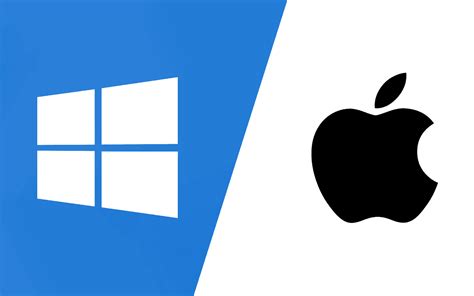
In the early days of computing, before the emergence of the popular modern operating systems we know today, several innovative systems paved the way for the advancements we enjoy now. This section sheds light on some of the landmark operating systems that existed prior to the rise of Windows and MacOS.
1. DOS (Disk Operating System): A renowned operating system, DOS was widely used in the 1980s and 1990s. It laid the foundation for future operating systems by providing a command-line interface and the ability to run software directly on hardware.
2. UNIX: Developed in the late 1960s, UNIX introduced the concept of a multitasking, multi-user operating system. It was known for its stability, efficiency, and support for a wide range of programming languages.
3. AmigaOS: Designed specifically for the Commodore Amiga computers in the mid-1980s, AmigaOS offered a multitasking environment with graphical user interface (GUI) features such as windowing and advanced multimedia capabilities, making it a pioneer in its time.
4. CP/M (Control Program/Monitor): CP/M was a popular operating system in the late 1970s and early 1980s. It provided a standardized platform for early microcomputers and was instrumental in the early development of personal computers.
5. OS/2: Developed jointly by IBM and Microsoft in the late 1980s, OS/2 aimed to be a high-performance replacement for DOS. Although it fell out of favor in the face of competition from Windows, OS/2 introduced several innovative features, including preemptive multitasking and a sophisticated user interface.
6. Macintosh System Software: Before the advent of macOS, Apple's Macintosh computers ran on various versions of the Macintosh System Software. These early operating systems featured a user-friendly interface and introduced concepts like drag-and-drop file manipulation.
7. OpenVMS: Created by Digital Equipment Corporation (DEC) in the 1970s, OpenVMS offered a highly reliable and secure operating system environment. It gained popularity in industries such as finance, government, and healthcare where system stability and security were paramount.
8. Atari TOS: Developed for the Atari ST computers in the mid-1980s, Atari TOS was known for its graphical user interface and desktop metaphor. It provided a user-friendly experience for individuals interested in desktop publishing, music production, and gaming.
These early operating systems laid the groundwork for the future of computing, and their contributions in terms of functionality and design influenced the development of the modern operating systems we rely on today.
The Origins of Computer Operating Systems
In the early days of computing, before the emergence of highly popular and recognizable operating systems like Windows and MacOS, a variety of innovative systems laid the foundation for modern computer technology. This article delves into the historical beginnings of these early operating systems, exploring their unique features and contributions to the development of the digital era.
- The First Operating System: From simple control programs to more complex software, the first operating systems paved the way for managing hardware and software resources efficiently.
- Mainframe Operating Systems: As computers started becoming larger and more powerful, mainframe operating systems emerged to handle complex tasks and tackle the challenges of managing multiple users and programs simultaneously.
- Unix: Designed for portability and flexibility, Unix introduced concepts like file systems, command-line interfaces, and multitasking, revolutionizing the computer industry.
- Early Microcomputer Operating Systems: In the age of microcomputers, various operating systems were developed to cater to the growing market. These systems showcased different approaches to user interfaces, file management, and resource allocation.
- The Rise of Open-Source Systems: Open-source operating systems, such as GNU/Linux, emerged as an alternative to proprietary software, fostering collaboration, customization, and the free exchange of ideas among developers and users.
By delving into the beginnings of computer operating systems, we can gain a better understanding of the evolution of technology, appreciate the pioneering efforts of early developers, and recognize the impact these systems had on shaping the modern digital landscape.
IBM Operating System/360 (OS/360)
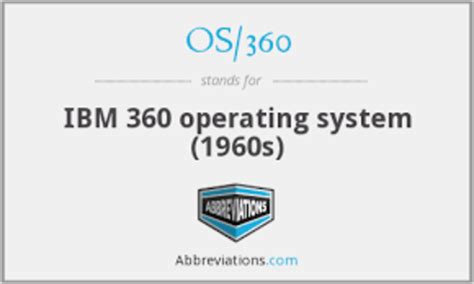
The IBM Operating System/360, commonly referred to as OS/360, was a groundbreaking and influential operating system developed by IBM in the mid-1960s. It was a precursor to modern operating systems and played a pivotal role in the evolution of computing technology.
OS/360 was designed to run on IBM's System/360 family of mainframe computers, which were known for their advanced capabilities and versatility. This operating system introduced several innovative features, making it a significant milestone in the history of computing.
One of the notable features of OS/360 was its ability to support multiprogramming, allowing multiple tasks or programs to run concurrently. This increased efficiency and utilization of computing resources, paving the way for the development of multitasking operating systems in the future.
OS/360 also introduced a hierarchical file system, which organized data in a tree-like structure. This hierarchical approach provided improved data management and facilitated the efficient retrieval and storage of files. It laid the foundation for the file systems used in modern operating systems.
An important aspect of OS/360 was its support for virtual memory, a concept that allows programs to use more memory than physically available. This feature significantly expanded the memory capacity and flexibility of the system, enabling the execution of larger and more complex applications.
OS/360 had a significant impact on the computer industry, setting the standard for operating systems and influencing subsequent developments. It showcased the potential of mainframe computers and laid the groundwork for the operating systems that followed, including the popular Windows and MacOS systems that dominate the computing landscape today.
UNIX: The Revolutionary Operating System
Before the rise of modern, mainstream operating systems such as Windows and MacOS, there existed a pioneering and influential OS called UNIX. This article explores the rich history and enduring impact of UNIX, a system that laid the foundation for many of the computing concepts and technologies we now take for granted.
Developed in the late 1960s by a team of computer scientists at Bell Labs, UNIX revolutionized the world of operating systems by introducing a range of innovative features and philosophies. Unlike its contemporaries, UNIX emphasized simplicity, modularity, and the concept of "everything is a file." Through its design principles, UNIX pushed the boundaries of what an operating system could do.
One of the key strengths of UNIX was its portability. The system was initially built for minicomputers, but its developers quickly recognized its potential to run on a wide range of hardware. This adaptability enabled UNIX to spread rapidly, finding its way onto various platforms, from small personal computers to powerful mainframes.
A defining characteristic of UNIX was its command-line interface, which offered users a powerful and flexible way to interact with the system. With a wealth of command-line utilities and the ability to chain them together using pipes, UNIX provided a level of control and automation unseen in other operating systems of the time.
In addition to its command-line interface, UNIX boasted a multiuser and multitasking environment, allowing multiple users to access the system simultaneously and run multiple processes concurrently. This capability transformed the way people worked with computers and paved the way for the development of networking and distributed computing.
| Key Features of UNIX |
|---|
| Portability |
| Command-line interface |
| Multiuser and multitasking environment |
| Modularity and simplicity |
| Everything is a file philosophy |
UNIX became a breeding ground for technological innovation, giving birth to various spin-offs and derivatives. Notably, it served as the foundation for the development of Linux, an open-source operating system that has seen widespread adoption and remains popular to this day. UNIX's influence extends far beyond its initial era and continues to shape the world of computing.
Overall, UNIX's pioneering nature, combined with its powerful and flexible design principles, allowed it to leave an indelible mark on the evolution of operating systems. Its concepts and ideas continue to influence modern computing, making UNIX an iconic and influential force in the history of software.
DEC's VMS: A Rival to the UNIX Operating System
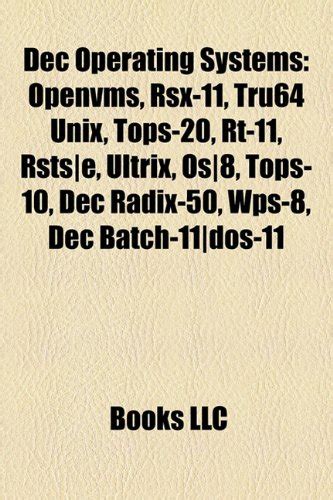
In the realm of computer software history, long before the dominance of popular modern operating systems like Windows and MacOS, there existed a formidable competitor to the UNIX operating system. Developed by Digital Equipment Corporation (DEC), VMS emerged as a noteworthy alternative that offered robust features and capabilities.
Introduction to VMS
DEC's VMS, also known as Virtual Memory System, was a pioneering operating system released in the late 1970s. It was specifically designed for DEC's VAX minicomputers, which were immensely popular during that era. VMS provided a reliable and efficient platform for running business applications and supporting critical operations.
Key Features and Advantages
VMS offered a range of features that made it an attractive option for many organizations. One of its notable strengths was its advanced security measures, including file and process-level access controls. Additionally, VMS boasted a robust multitasking environment and supported multiple users simultaneously, allowing for efficient resource utilization.
Furthermore, VMS excelled in terms of reliability and fault-tolerance. Its advanced error-handling capabilities enabled the system to recover from failures promptly, ensuring minimal downtime and data loss. The well-designed hierarchical file system in VMS allowed for efficient organization and management of data.
Another distinguishing aspect of VMS was its support for multiple programming languages, which greatly enhanced its versatility. This enabled developers to build applications using various programming paradigms, including high-level languages like FORTRAN and COBOL.
Influence and Legacy
VMS had a significant impact on the development of subsequent operating systems. Its innovative concepts and technological advancements influenced the design of other operating systems, including the use of virtual memory and the implementation of hierarchical file systems. VMS laid the foundation for future improvements in operating system architecture and set the stage for the evolution of modern computing environments.
While the popularity of VMS waned over the years due to changing market dynamics and the rise of competing systems like UNIX and Windows, its legacy is still remembered as an important chapter in the history of operating systems.
CP/M: The OS That Inspired MS-DOS
In the realm of computer software, there have been influential operating systems that paved the way for the development of modern platforms like Windows and MacOS. One such operating system is CP/M, which served as a significant inspiration for the creation of MS-DOS.
CP/M, an abbreviation for Control Program/Monitor, was a pioneering operating system that emerged before the era dominated by Windows and MacOS. Its impact on the early computing landscape cannot be understated, as it laid the foundation for the subsequent evolution of personal computer operating systems.
Developed by Gary Kildall in the mid-1970s, CP/M was designed to run on the Intel 8080 microprocessor, which was a widely used chip at the time. It introduced many concepts and features that are now considered fundamental to operating systems, such as file management, directory structures, and a command-line interface.
One of the most significant contributions of CP/M was its influence on the development of MS-DOS, the operating system that would later power the iconic IBM PC and countless compatible machines. MS-DOS borrowed heavily from the design and functionality of CP/M, including its file system structure and command syntax.
CP/M's impact on MS-DOS can be seen in the similarities between the two operating systems' command-line interfaces. Many commands and their syntax were directly inspired by CP/M, making the transition from one system to another relatively seamless for users familiar with CP/M.
The legacy of CP/M extends beyond its direct influence on MS-DOS. It played a crucial role in shaping the early software ecosystem and facilitating the growth of the personal computer industry. Its simplicity and widespread availability made it a popular choice among early adopters and helped establish certain computing standards that persist to this day.
Although CP/M eventually faded into obscurity, it remains an important part of computer history. Its contribution to the evolution of operating systems, particularly its impact on MS-DOS, cements its place as an influential predecessor to the modern platforms we use today.
AmigaOS: A Revolution in Multimedia
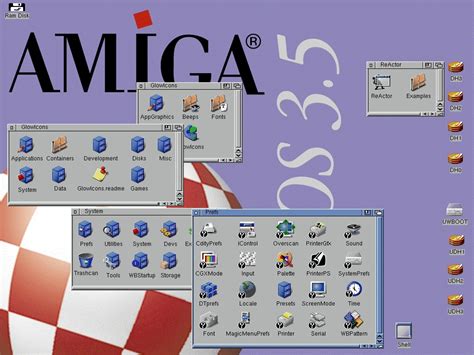
The AmigaOS. A groundbreaking software innovation that reshaped the digital landscape and redefined the way we experience multimedia. Unlike any other computing system that came before it, AmigaOS revolutionized the concept of interactive graphics, audio, and video, setting new standards for performance and versatility.
This pioneering operating system, developed in the era preceding the dominance of Windows and MacOS, captivated users with its unparalleled capabilities. AmigaOS provided a seamless and immersive multimedia experience, empowering users to unleash their creativity and explore the possibilities of digital media unlike ever before.
With its sophisticated design and advanced functionality, AmigaOS outperformed other platforms of its time in terms of multitasking, graphics rendering, and audio manipulation. Its custom chips and innovative architecture allowed for smooth and fluid animations, lifelike sound synthesis, and unparalleled video playback.
AmigaOS fostered a vibrant community of enthusiasts and developers who embraced its cutting-edge features and pushed the boundaries of creativity. From graphic designers and video producers to musicians and game developers, AmigaOS provided a platform that inspired innovation and unleashed a wave of multimedia exploration.
Even decades later, the influence of AmigaOS can still be felt in the world of computing. Its profound impact on the development of multimedia technologies continues to resonate, shaping the evolution of digital experiences and serving as a testament to the lasting legacy of this extraordinary operating system.
BeOS: An Exciting Alternative
In the diverse landscape of early computer operating systems, one particular contender stood out as a promising and distinctive alternative to the likes of Windows and MacOS. This exceptional system was BeOS, a cutting-edge platform that boasted innovation, efficiency, and a unique user experience.
Embracing a forward-thinking approach, BeOS differentiated itself through its robust multitasking capabilities, allowing users to seamlessly run multiple applications concurrently. This groundbreaking feature provided a significant performance advantage and contributed to a more productive computing environment.
BeOS also brought an aesthetic appeal, with its sleek graphical interface and user-friendly design. It offered a fluid and intuitive user experience, making it a beloved choice among artists, multimedia professionals, and creative individuals. The system provided seamless integration with media devices, enabling high-quality audio and video processing that set it apart from its competitors.
Additionally, BeOS prioritized stability and reliability, ensuring a smooth and crash-free operation. Its kernel architecture and file system design allowed for secure and efficient data handling, minimizing the risk of data loss or system failures.
While BeOS may not have achieved the wide-scale popularity of its contemporaries, its innovative approach and unique features left a lasting impact on the world of operating systems. It remains a testament to the diversity and creativity that thrived within the early stages of computing, offering an alternative vision to the widely adopted Windows and MacOS.
- Robust multitasking capabilities
- Sleek graphical interface
- User-friendly design
- Seamless integration with media devices
- Stability and reliability
OS/2: The Collaboration
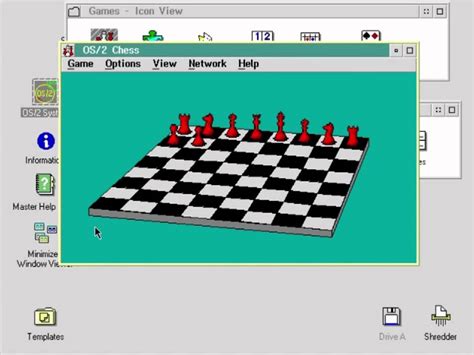
In the chronicles of computer history, before the advent of widely known operating systems such as Windows and MacOS, there were pioneering collaborations that set the stage for modern computing. One such notable joint effort was OS/2, a remarkable collaboration between two renowned technology giants.
- The Birth of a Collaboration
- The Collaboration Unleashed:
- A Promising Prospect:
- Revolutionizing the User Experience:
- Advanced Features and Functionality:
- The Waning of a Partnership:
- The Legacy:
OS/2 emerged as a result of a unique partnership between IBM and Microsoft, aiming to create an advanced operating system that would push the boundaries of computing. This collaboration brought together the expertise and resources of two technology powerhouses, each contributing their ingenuity and technology prowess.
As the collaboration unfolded, OS/2 began to reveal its immense potential. Its cutting-edge features and functionality showcased the combined efforts of IBM and Microsoft in redefining the user experience. With its graphical user interface, multitasking capabilities, and better memory management, OS/2 provided an unprecedented level of productivity and efficiency.
OS/2 boasted advanced features like object-oriented programming, easy installation, and networking support. These advancements were instrumental in revolutionizing the way users interacted with their computers, catering to both professional and personal computing needs with utmost convenience.
However, despite initial promise and acclaim, the partnership between IBM and Microsoft experienced strains, leading to a gradual dissolution of the collaboration. As business interests and strategic direction diverged, the influence and support for OS/2 began to decline, eventually paving the way for the rise of newer operating systems in the market.
Nevertheless, OS/2 left an indelible mark on the evolution of operating systems. Its groundbreaking features and collaborative nature paved the way for future advancements, profoundly shaping the landscape of modern computing. OS/2 served as a testament to the power of collaboration and innovation, despite its ultimate fate in the ever-evolving world of technology.
NeXTSTEP: Steve Jobs' Bold Venture
Explore the fascinating journey of NeXTSTEP, an innovative operating system crafted by the visionary Steve Jobs. Before the emergence of Windows or MacOS, Jobs embarked on an ambitious venture, aiming to redefine the computer industry with his ingenuity and revolutionary ideas.
- Delve into the genesis of NeXTSTEP, a ground-breaking creation that laid the foundation for future operating systems.
- Uncover the compelling features and design principles that set NeXTSTEP apart from its predecessors.
- Discover how NeXTSTEP's advanced object-oriented programming capabilities revolutionized software development and paved the way for modern technological advancements.
- Learn about the significant impact of NeXTSTEP on various sectors, from academia to enterprise applications, and its enduring influence on subsequent operating systems.
- Gain insights into the legacy of NeXTSTEP and its pivotal role in shaping the technology landscape as we know it today.
Join us on a journey back in time as we delve into the remarkable story of NeXTSTEP, showcasing Steve Jobs' relentless pursuit of innovation and his unyielding determination to push the boundaries of what an operating system could achieve.
Operating Systems Overview - CompTIA A+ 220-1102 - 1.8
Operating Systems Overview - CompTIA A+ 220-1102 - 1.8 by Professor Messer 74,873 views 1 year ago 10 minutes, 12 seconds
I Switched To Mac, After 15 Years of Windows (BRUH)
I Switched To Mac, After 15 Years of Windows (BRUH) by Melon Type 434,730 views 6 months ago 10 minutes, 16 seconds
FAQ
What were some popular operating systems that existed before Windows and MacOS?
Some popular operating systems that existed before Windows and MacOS include MS-DOS, Unix, AmigaOS, and CP/M.
How have operating systems evolved over time?
Operating systems have evolved significantly over time. They have become more user-friendly, visually appealing, and capable of supporting a wider range of software and hardware. Modern operating systems also offer more advanced features such as multitasking, networking, and graphical interfaces.
Why were MS-DOS and Windows so significant in the history of personal computers?
MS-DOS and Windows were significant in the history of personal computers because they were among the first operating systems that provided a user-friendly interface and a wide range of software compatibility. They played a major role in popularizing personal computers and making them more accessible to the general public.
What are some examples of discontinued operating systems?
Some examples of discontinued operating systems include BeOS, OS/2, Atari TOS, and Novell NetWare. These operating systems were once popular but eventually ceased development due to various reasons such as lack of market demand or technological advancements.




